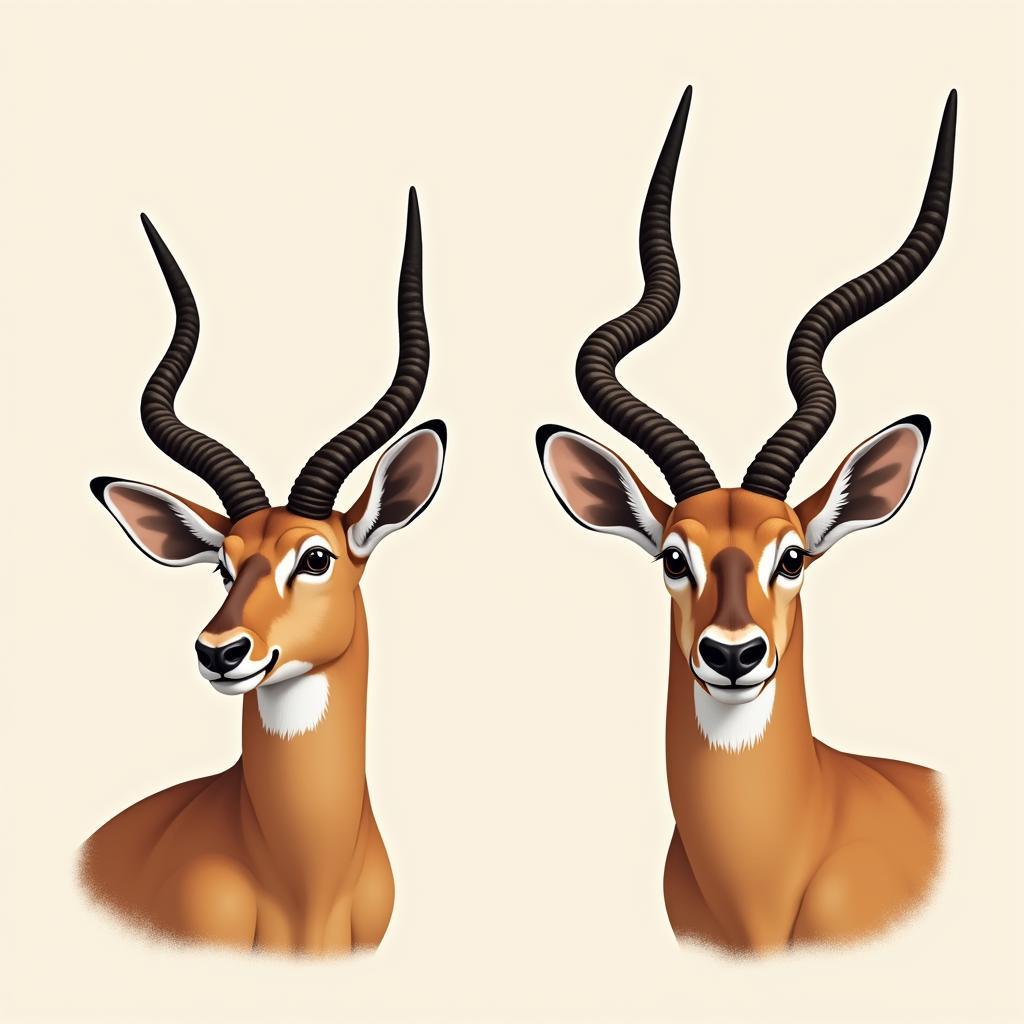The African Impala: A Guide to this Graceful Antelope
The African impala, a common sight on the savannas of eastern and southern Africa, is a medium-sized antelope known for its incredible leaping ability and striking beauty. This article delves into the captivating world of the impala, exploring its physical characteristics, behavior, diet, habitat, and the threats it faces.
The Impala’s Distinctive Features
A Study in Elegance: Physical Appearance
 Male and Female Impalas
Male and Female Impalas
Impalas exhibit sexual dimorphism, meaning males and females have distinct physical differences. Male impalas are easily recognized by their slender, lyre-shaped horns that can grow up to 35 inches long. Females, on the other hand, lack horns. Their coats are a reddish-brown on the upper body, fading to a lighter tan on the flanks and a white belly. A distinctive black stripe runs along the lower back and tail.
Built for Speed and Agility
Their slender bodies, long legs, and powerful hindquarters make impalas incredibly agile, allowing them to reach speeds of up to 60 miles per hour in short bursts. Their most remarkable feat, however, is their jumping ability. An impala can leap distances of over 30 feet horizontally and 10 feet vertically, effortlessly clearing obstacles and evading predators.
Life on the Savanna: Habitat and Diet
The African impala thrives in savanna woodlands, where scattered trees and shrubs provide both sustenance and shade. They are highly adaptable grazers, their diet changing with the seasons. During the wet season, they graze primarily on lush grasses. As the dry season arrives and grass becomes scarce, they switch to browsing on leaves, shoots, and fruits.
Social Dynamics: Herds and Hierarchy
Impalas are highly social animals, forming herds of up to 100 individuals. These herds consist of females and their young, led by a dominant male. Young males, often excluded from breeding herds, form bachelor herds where they practice their sparring skills and establish their own hierarchy.
The Role of Communication
Impalas communicate through a variety of vocalizations, including grunts, snorts, and whistles. They also use body language, such as tail flicks and head postures, to signal their intentions and status within the herd.
Predators and Threats
As a prey species, impalas face constant threats from predators such as lions, leopards, cheetahs, wild dogs, and crocodiles. Their agility and speed are their primary defenses, but their vigilance and herd behavior also play a crucial role in their survival.
Conservation Status and the Future of the Impala
The impala is listed as a species of “Least Concern” by the International Union for Conservation of Nature (IUCN). However, habitat loss due to human encroachment and hunting for their meat and horns pose ongoing threats. Conservation efforts focus on habitat protection, anti-poaching measures, and sustainable wildlife management practices.
Conclusion
The African impala, with its captivating leaps, striking beauty, and fascinating social dynamics, is a testament to the wonders of the African savanna. Understanding their behavior, ecology, and the threats they face is vital for ensuring their continued survival in a rapidly changing world.


